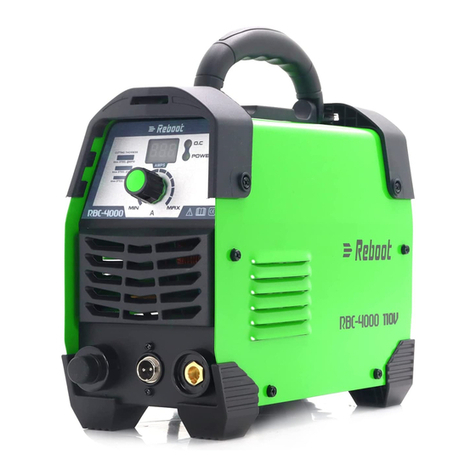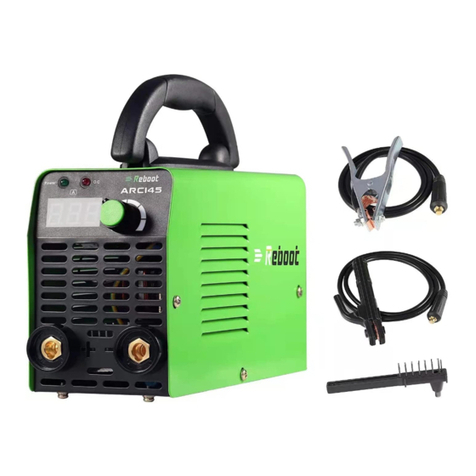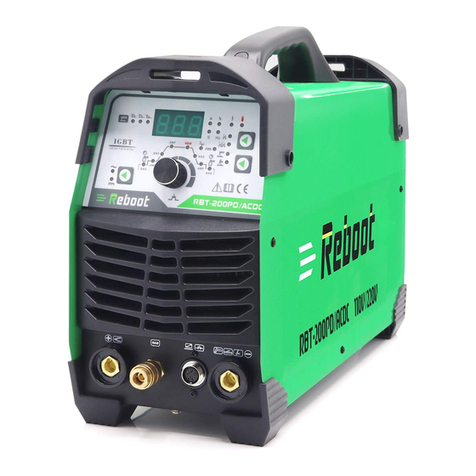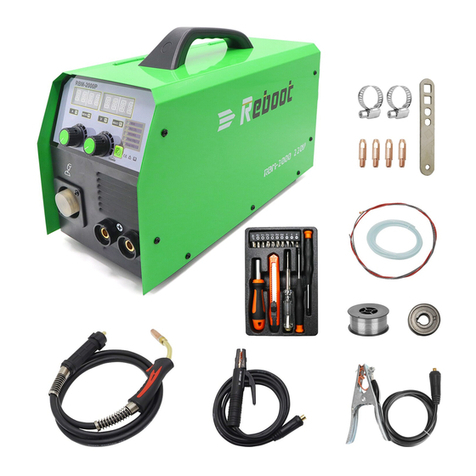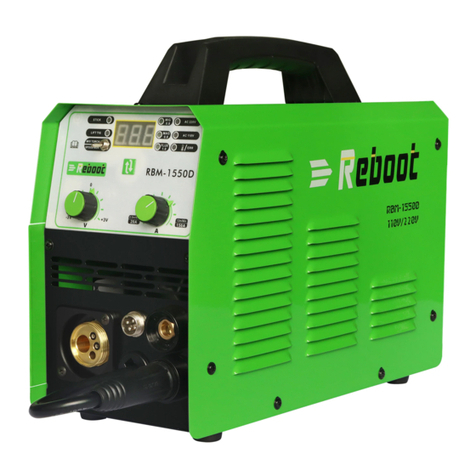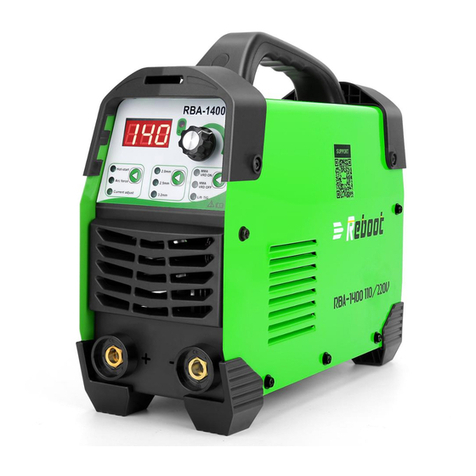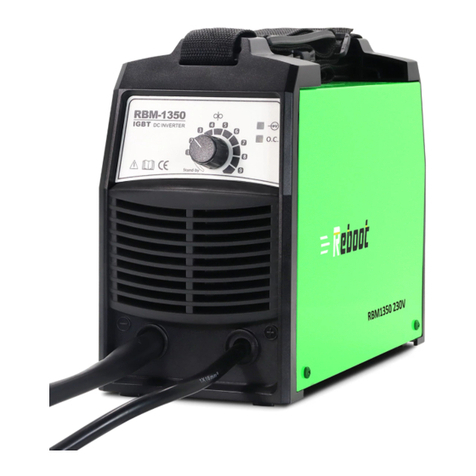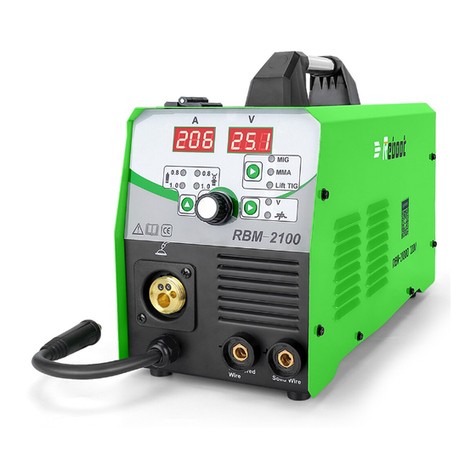
- 8 -
connector on the front panel, The workpiece is connected to negative (-) connector by the work clamp cable. Suitable for
positive wire or stick electrode.
Direct Current Electrode Negative (DCEN):The workpiece is connected to the positive (+) connector on the front panel.
The welding electrode cable (MMA stinger, MIG gun, TIG Gun) is connected to the negative (-) connector pole. Suitable
for negative wire stick electrode.
The polarity is selected according to the welding process requirements of the workpiece, use of incorrect polarity may
cause arc instability, spatter and lack of fusion.
STICK Manual Welding Operation Procedures
Make sure the electrode cable is connected to the positive front panel connector.
The working clamp clamps the workpiece and is connected to the negative
connector on the front panel.
Make sure the [4 Mode Switch] at Stick Mode.Adjust [7 Adjust current] The welding
current can be changed.The welding current range is 40A to maximum current 150A
adjustment.
Operating Procedures for MIG
Gas Protection Welding-Solid wire
Welding wire Installation. ( Refer to 2.1)
Use the V-groove roller for stainless steel and carbon steel.
Connection of the gas cylinder(Refer to 2.3)
Insert the quick connect end of the MIG Gun selection cable into
the positive connector on the front panel (DCEP).Insert the quick
connect end of the working clamp cable into the negative
connector on the front panel on the machine.Check wire
operation:press torch trigger, the wire feeder will feed the wire through the torch tip. Select MIG mode on the front
control panel(Make sure you are not in SPOOL GUN state). After that, select the right material and diameter you are
welding with. Adjust amperage according your workpiece thickness.
To find the best welding performance and suitable for your welding habits. You may also adjust voltage to build a
perfect welding bead and penetration.
Gasless Welding-flux cored wire
Welding wire Installation.(Refer to 2.1)
Use the proper diameter Knurled roller for flux cored wire.
Insert the quick connect end of the MIG Gun selector cable into
the negative connector on the fron panel of the machine
(DCEN).Insert the quick connect end of the working clamp cable
into the positive connector on the front of the machine.Check wire
operation:press torch switch, the wire feeder will feed the wire
through the torch tip.Select MIG mode on the front control
panel(Make sure you are not in SPOOL GUN state). After that, select the right material and diameter you are welding
with. Adjust amperage according your workpiece thickness.
To find the best welding performance and suitable for your welding habits. You may also adjust voltage to build a perfect
welding bead and penetration.






